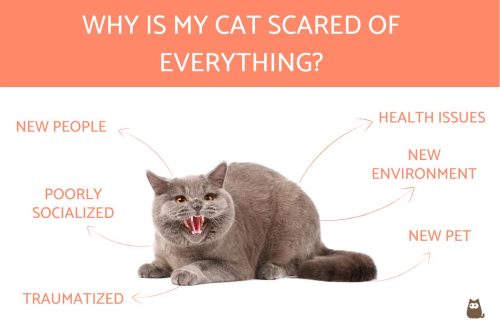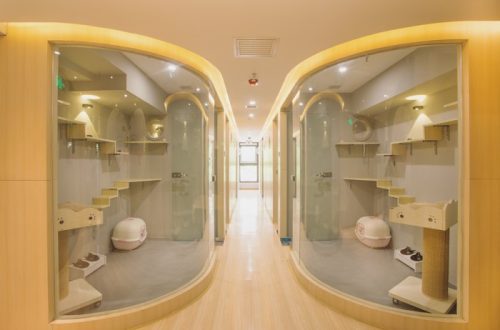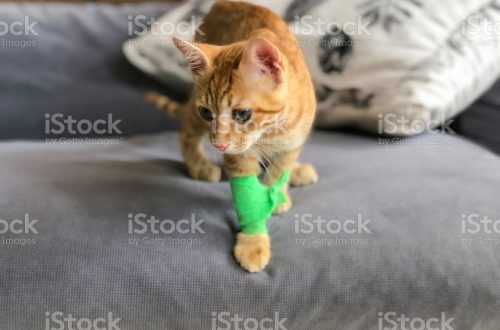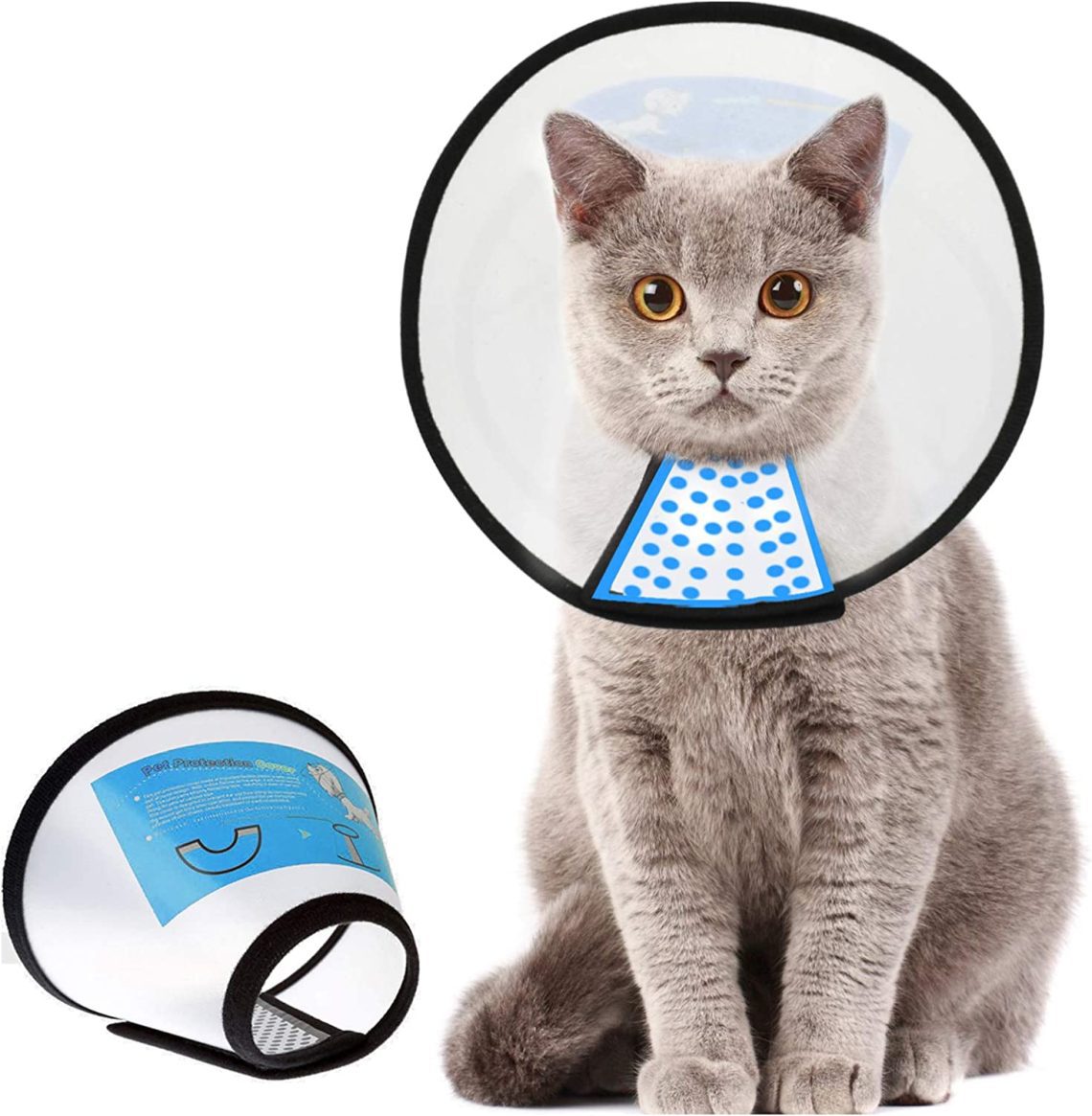
Protective collar for cats
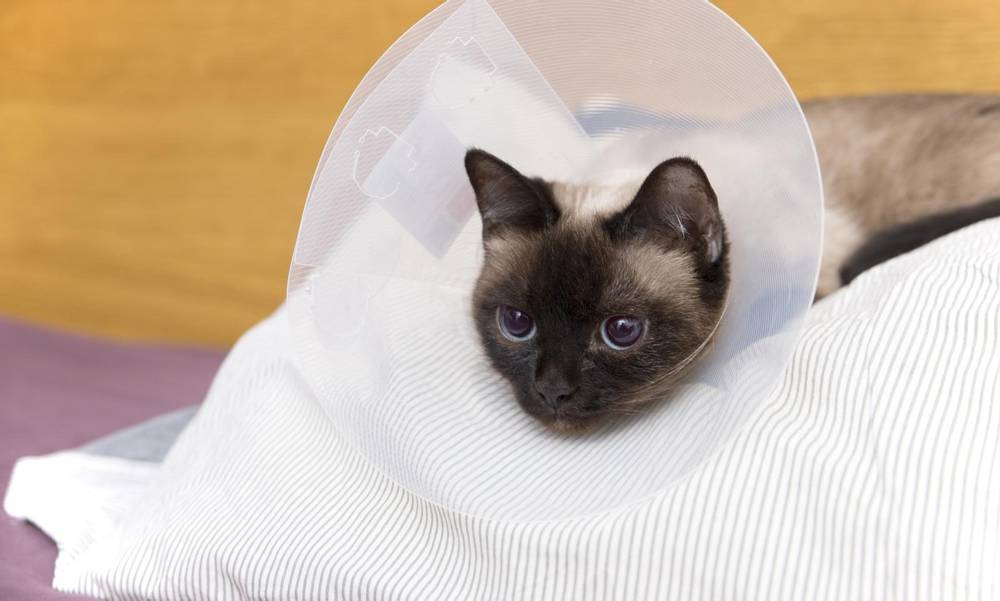
A cat collar is a special rigid cone that is worn around the neck of an animal in order to restrict its movements. It does not allow the pet to reach the injured and treated areas of the body with its tongue. Used for both cats and dogs.
When is a collar recommended?
Postoperative period
Cats are always trying to lick their wounds. So that the pet cannot do this, does not damage the seams and does not infect the wound, a collar is put on it. This is especially true after sterilization. In Europe, for example, doctors do not always use a protective blanket, but recommend putting a collar on pets.
skin diseases
Often the cat strives to lick off the ointment, powder or any other external agent from the surface of the skin. The reason is the same – hygiene and self-licking of wounds.
Collar or blanket?
Often, after the operation, pets are put on a protective blanket. She has both advantages over the collar and disadvantages. For example, it protects the seam better from external factors than the collar. The cat gets used to the blanket much faster, and the fabric does not restrict the movement of the animal. Its disadvantages are that the cat can manage to get its tongue to the wound under the blanket and lick the seams, besides, there is always a risk that she will remove the blanket or catch it on something.
A post-operative collar for cats restricts the movement of the animal and will definitely not allow it to reach the wound. In order for the accessory to be as convenient and comfortable as possible, it must be chosen correctly.
How to choose a collar?
The collar should be in size: do not squeeze the throat and do not hang around the pet’s neck.
It should not be heavy or too big. Such models will excessively restrict the movement of the pet, prevent him from jumping and running.
Do not give preference to cheap models. As a rule, they are made of plastic of not the best quality and therefore can be dangerous for animals.
The sharp edges of the collar should be pasted over with adhesive tape or plaster so that the pet does not get hurt.
If you buy a collar for a kitten, choose the model of the appropriate size. Should not be taken “for growth”.
Please note that sometimes the collar must be removed to give the pet a rest. If the cat refuses to eat in the collar, it will have to be removed at the time of each meal. Do not leave the animal unattended during this time!
A protective collar can be purchased at a pet store or you can make your own. If you do not have experience in sewing and making such products, then you should not start with this – it is better to make a choice in favor of buying a ready-made one.
Self-made
If the collar needs to be put on urgently, and the pet’s visit to the veterinarian can take place only the next day, then you can make it yourself from improvised means. Such a collar will not be reliable enough, and in any case it will need to be replaced. But as a first measure (for a few hours) it will do just fine.
In order to make a protective collar, you will need thick cardboard, tape and lace. A cone should be cut out of cardboard: its narrow part should correspond to the girth of the pet’s neck. For ease of attachment to the lower part, you can glue loops for the collar – so the collar will sit tighter. The sharp edges should be treated with adhesive tape, and the lace will be needed to fasten the two parts of the cone.
14 May 2018
Updated: 30 March 2022



